The Guanche bred rather large and ferocious dogs on a cluster of islands one hundred kilometres west of Morocco, just under four hours flight from Gatwick.
Pliny the Elder records that the King of Mauritiania (including current day Morocco and part of Algiers) was impressed with a pair of these dogs sent to him in 60 AD, and would surely have been more impressed to know that we can fly almost anywhere in 2012 AD.
I have to say I was shocked myself to leave London covered in a few inches of snow and to arrive a few hours later in the rather stark homeland of the Guanche. Gran Canaria is named, it appears, in honour of these highly regarded dogs: ‘canaria’ is extracted from the Latin ‘canis’ for dog. It appears also that the tribe of Guanche on this island called themselves the ‘canarii’, so one wonders really which came first.
What we can say is that canaries, those well-known yellow birdlets, came later. Yes they are native to the islands and have most likely been here longer than the Guanche, but they were named canaries after the islands (The Canary Islands include 11 islands of which Gran Canaria is the second largest and second most populous in the archipelago.)
Lynda and I are here on holiday but of course there are always some botanical morsels. So far it’s all been succulents and other plants adapted the southern and eastern side of the island which bears the brunt of winds from the Sahara Desert. Remember, as I’m sure all my readers will, that there are no cacti native here or in Africa but plenty of euphorbs (Euphorbiaceae) looking like cacti (for a refresher, see this posting).
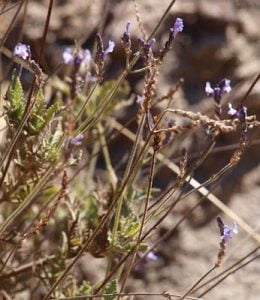
Lavandula canariensis (I think!)
The most cacti-like one around the parts where we went today – from Puerto de Mogan to Ayacata andback via Arguineguin – is Euphorbia canariensis, only found in the dog islands.
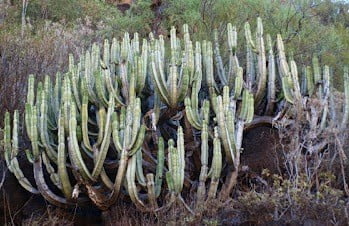
Rounded form of Euphorbia canariensis
We also found a nondescript, thyme-odoured plant which I assume to be Micromeria benthamii, another local.
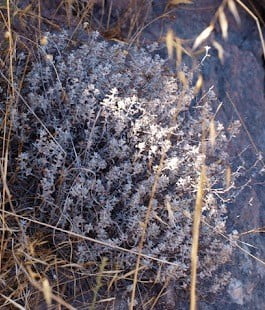
Micromeria benthamii
But when most people think of the Canary Islands they think of three plants. The first is Phoenix canariensis, the Canary Island Palm.
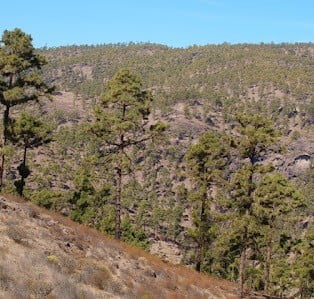
Pinus canariensis
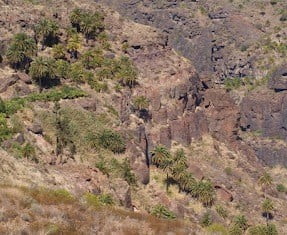
Phoenix canariensis palms
The third? Dracaena draco. I gather there are only few left growing naturally, perhaps only one or two on Gran Canaria, but more on Tenerife (the largest and most populous island). There is also a local species of Dragon Tree found only on Gran Canaria, Dracaena tamaranae. We are unlikely to see the latter, which I gather grows not far from the route we travelled today but in an inaccessible area (at least to tourists like us). I’m sure we’ll find some planted specimens of the more widespread Dragon Tree, but that’s for another day, and another blog.
Instead let me finish with an iconic Canary Island planted species, now in flower: the almond, growing near to Ayacata.
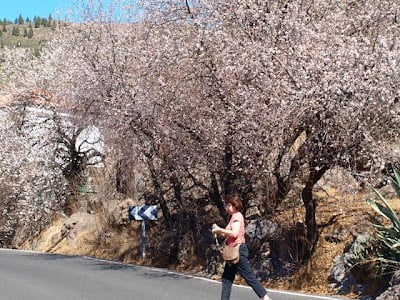
Flowering almonds near Ayacata
[From Talking Plants]
